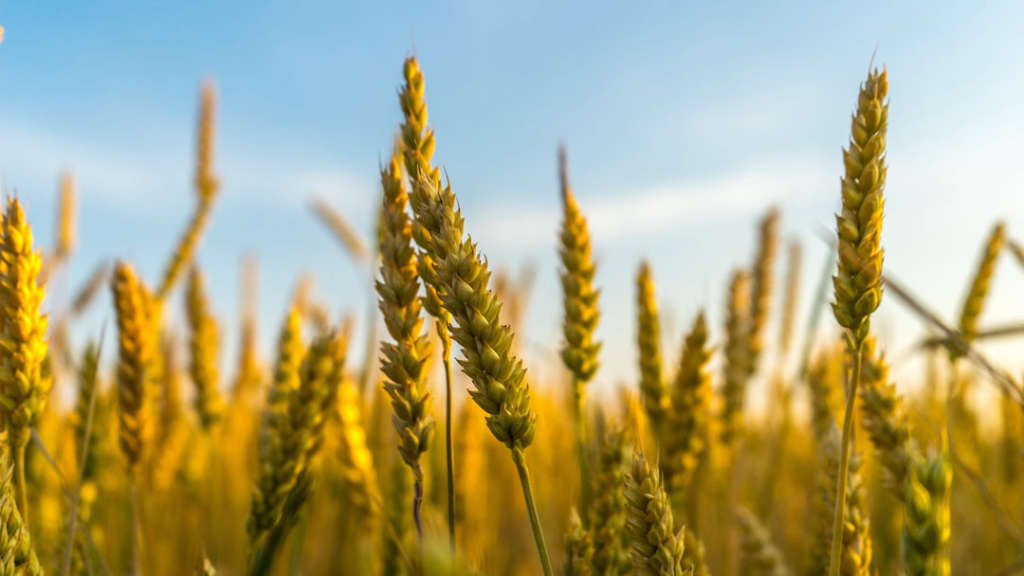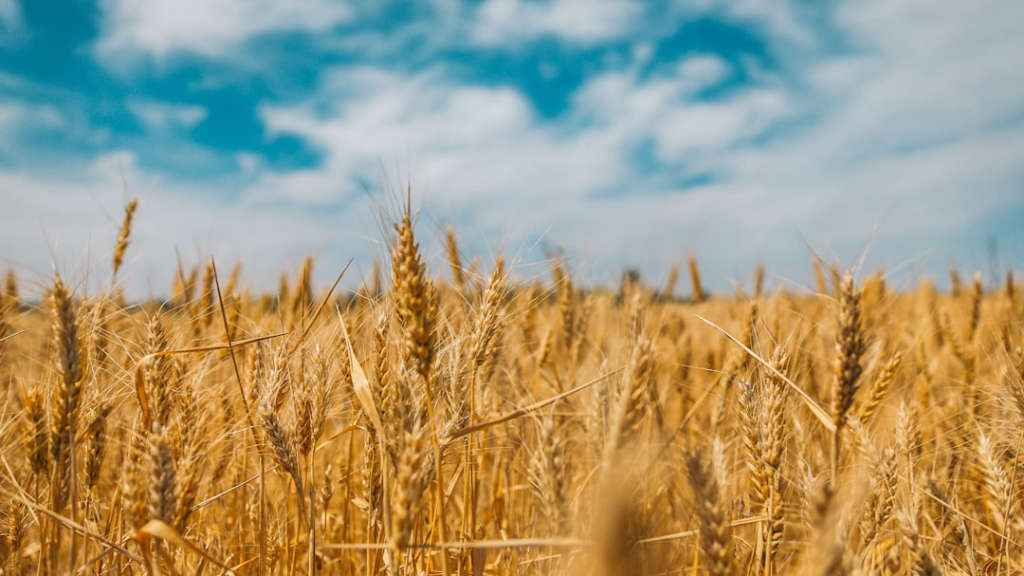Wheat is one of the most important staple crops that sustains millions around the globe. As we delve into the world of wheat production statistics, we uncover intriguing trends that highlight not only the yield variations but also the evolving agricultural practices. Understanding these statistics is essential, as they reveal the challenges and opportunities faced by farmers worldwide. From climate impacts to technological advancements, every factor plays a significant role in shaping the future of wheat production.
Main Points
- Current global wheat production figures and major producing countries.
- Impact of climate change on wheat crops and yields.
- Technological advancements that enhance wheat production efficiency.
- Future predictions for wheat supply and demand.
- Strategies for sustainable wheat farming practices.

Global Wheat Production: Key Players and Their Impact on Market Trends
In the intricate tapestry of agricultural commodities, wheat holds a paramount position. Different countries contribute uniquely to global wheat production, significantly influencing market trends. Understanding these key players is crucial for grasping the dynamics of the wheat market. The constant fluctuations in supply and demand can bewilder even the most seasoned investors and stakeholders in the agricultural sector.
Major Wheat Producers
Several countries stand out as front-runners in the realm of wheat production. Each player’s involvement shapes not only local economies but also the international market. Here’s a closer look at the principal players:
- China: Dominating the production charts, China is engaged in wheat cultivation on an immense scale. The country primarily focuses on meeting its domestic needs, which influences global prices due to its sheer volume.
- India: Known for its diverse climatic conditions, India boasts a significant wheat output. Agricultural policies in India have evolved, impacting both production and export strategies.
- Russia: A powerhouse in wheat exports, Russia’s agricultural reforms and advancements in farming techniques have bolstered its market presence. Fluctuations in Russian production levels can send ripples through the global market.
- United States: Renowned for its high-quality wheat, the U.S. plays a vital role in the international wheat market. Factors such as crop rotation and technological innovations contribute to its competitive edge.
- France: As Europe’s leading wheat exporter, France’s production trends are essential. Changes in weather patterns or regulations can significantly affect its surplus and pricing.
Market Trends Influenced by Production
Market trends in wheat are closely entwined with production levels from these key countries. The complexities arise from various factors that can disrupt or enhance production:
- Climate Conditions: Unpredictable weather patterns can adversely affect yields, leading to price volatility.
- Trade Policies: Tariffs and export bans can create sudden shifts in availability and stockpiles globally.
- Technological Advancements: Innovations in farming increase productivity, thereby altering supply dynamics.
As we navigate through these turbulent waters, it becomes evident that while key players may lead the way in wheat production, external variables remain influential in shaping overall market trends. Stakeholders must keep a keen eye on developments in these regions to manage risks effectively.
Conclusion
In summary, the global wheat landscape is defined by its key players. China’s domestic focus, India’s production diversity, Russia’s export capabilities, the U.S.’s quality, and France’s regional influence collectively impact market dynamics. Consequently, staying informed and adaptable is crucial for anyone looking to thrive in the wheat market. The intricate interplay of various elements can at times be perplexing, yet understanding them creates opportunities for savvy participants in this vital sector.

Analyzing Climate Change Effects on Wheat Yields: A Statistical Overview
The intricate relationship between climate change and agricultural productivity has sparked significant research interest in recent years. Among various crops, wheat stands out as a staple that underpins global food security. Understanding how climate change impacts wheat yields is crucial for farmers, policymakers, and scientists alike. In this analysis, we will explore the statistical frameworks that highlight these impacts, drawing upon recent data to illustrate trends, challenges, and potential solutions.
The Current State of Wheat Production
Globally, wheat is one of the most extensively cultivated crops, with production predominantly concentrated in regions like North America, Europe, and parts of Asia. The demand for wheat continues to grow, driven largely by population expansion and changing dietary preferences. However, fluctuating weather patterns driven by climate change threaten this stability. For instance, increasing temperatures can lead to heat stress, affecting both the quality and quantity of wheat yields.
| Region | Average Yield (tons/hectare) | Impact of Climate Change |
|---|---|---|
| North America | 3.0 | Moderate |
| Europe | 5.5 | High |
| Asia | 2.7 | Severe |
Statistical Models and Findings
To adequately assess the effects of climate change on wheat yields, researchers employ a variety of statistical models. Regression analysis, for example, allows for the examination of historical yield data against climate variables such as temperature, precipitation, and CO2 levels. The findings can be bewildering at times. While some regions may report yield increases due to longer growing seasons, others suffer from losses attributed to extreme weather events. This paradox highlights the complex interplay between different climatic factors.
Meta-analyses reveal that, on average, wheat yields may decline by up to 6% for every degree Celsius rise in temperature beyond the critical threshold. However, this statistic is often debated, leading to confusion surrounding the actual risks involved. Private-sector agronomists, alongside public scientists, strive to clarify these matters, advocating for adaptive strategies in farming practices and crop selection.
Future Projections and Adaptation Strategies
As we look to the future, the importance of robust adaptation strategies cannot be overstated. The integration of advanced agricultural technologies, along with sustainable farming practices, is essential for mitigating the adverse effects of climate change on wheat production. Innovations in seed genetics, precision agriculture, and crop rotation are promising avenues that could sustain and enhance yields while preserving environmental health.
Moreover, collaborative efforts among governmental bodies, farmers, and researchers are vital. They can develop comprehensive frameworks for monitoring climate impact on agriculture. Education and extension services can also empower local farmers to make informed decisions based on empirical data, helping them navigate this rapidly changing landscape.
In conclusion, the trajectory of wheat yields under climate change remains uncertain, fraught with complexities that warrant meticulous consideration. The multifaceted nature of these impacts necessitates ongoing research, open dialogue, and adaptive practices to foster resilience in agricultural systems. By addressing these challenges head-on, we can strive to secure a more sustainable future for wheat production worldwide.

Future Projections: How Technological Innovations Will Shape Wheat Farming
As we stand on the brink of unprecedented technological advancements, the world of agriculture, particularly wheat farming, is poised for transformation. This transformation is not just a mere trend; it is a profound shift that will impact everything from crop yields to farming practices. Innovations in both technology and science are set to redefine what it means to cultivate wheat. But how will these innovations manifest, and what challenges might they also present?
Precision Agriculture: The Game Changer
One of the most promising technological advancements is precision agriculture. By utilizing advanced data analytics, farmers can monitor soil health, moisture levels, and crop conditions with remarkable accuracy. Drones equipped with sensors collect vital information, providing insights that help farmers make informed decisions. However, this dependence on technology raises questions about accessibility. Not every farmer has the resources to invest in high-tech equipment. Thus, while precision agriculture could increase efficiency, it might also widen the gap between large-scale operations and smaller farms.
Biotechnology and Wheat Varietals
Another area ripe for innovation is biotechnology. The development of genetically modified organisms (GMOs) has spurred debates regarding safety and ethics. Yet, biotechnology promises to create wheat varieties that are more resistant to pests and climate extremes. These resilient varieties could prove essential as climate change continues to threaten traditional farming practices. Still, public perceptions and regulatory hurdles around GMOs may complicate their acceptance, leaving farmers in a limbo of uncertainty.
Automation and Labor Dynamics
Automation is set to revolutionize labor dynamics in wheat farming. From autonomous tractors to robotic harvesters, these technologies could significantly lower labor costs. However, there is a flip side; as machines take over tasks traditionally performed by humans, concerns about unemployment emerge. The challenge will lie in ensuring a balance where technology enhances productivity without displacing skilled laborers. Farmers must navigate this evolving landscape while weighing the benefits of automation against the societal implications.
Data-Driven Decisions: The New Farming Era
In an age where data drives decisions, the integration of artificial intelligence into farming practices is becoming a norm. AI algorithms can predict crop performance based on myriad factors. This capability enables farmers to anticipate challenges and adjust strategies accordingly. Yet, the reliance on data can lead to overconfidence. Farmers might feel they possess all the necessary information, but unpredictable variables, such as sudden weather shifts, can disrupt even the most meticulous plans.
Conclusion: A Mixed Bag of Opportunities and Challenges
The future of wheat farming is undoubtedly filled with opportunities owing to emerging technologies. However, these advancements do not come without their share of challenges. As the industry embraces innovation, it must also confront issues like accessibility, public perception, and labor dynamics. Open dialogue among stakeholders—from farmers to policymakers—will be crucial in navigating this complex landscape. By fostering collaboration, we can turn potential pitfalls into stepping stones, ensuring a more sustainable and productive future for wheat farming.
Conclusion
In summary, the growing importance of wheat production statistics cannot be overstated. These figures not only reflect agricultural trends but also highlight the broader implications for food security and economic stability. While challenges exist in the sector, such as climate change and market fluctuations, understanding these statistics helps us make informed decisions moving forward. It’s essential to stay engaged with this data, as it directly influences not just farmers and producers, but also consumers and policymakers alike. Therefore, by appreciating the nuances of wheat production statistics, we can foster a more resilient agricultural future for everyone.
Frequently Asked Questions
What is the largest wheat producing country in the world?
China is the largest wheat producing country in the world, followed closely by India and Russia.
What factors influence wheat production?
Wheat production is influenced by several factors including climate, soil quality, agricultural practices, pest control, and access to technology.
How has wheat production changed over the years?
Wheat production has generally increased over the years due to advancements in agricultural technology and practices, but it can fluctuate based on weather conditions and global demand.